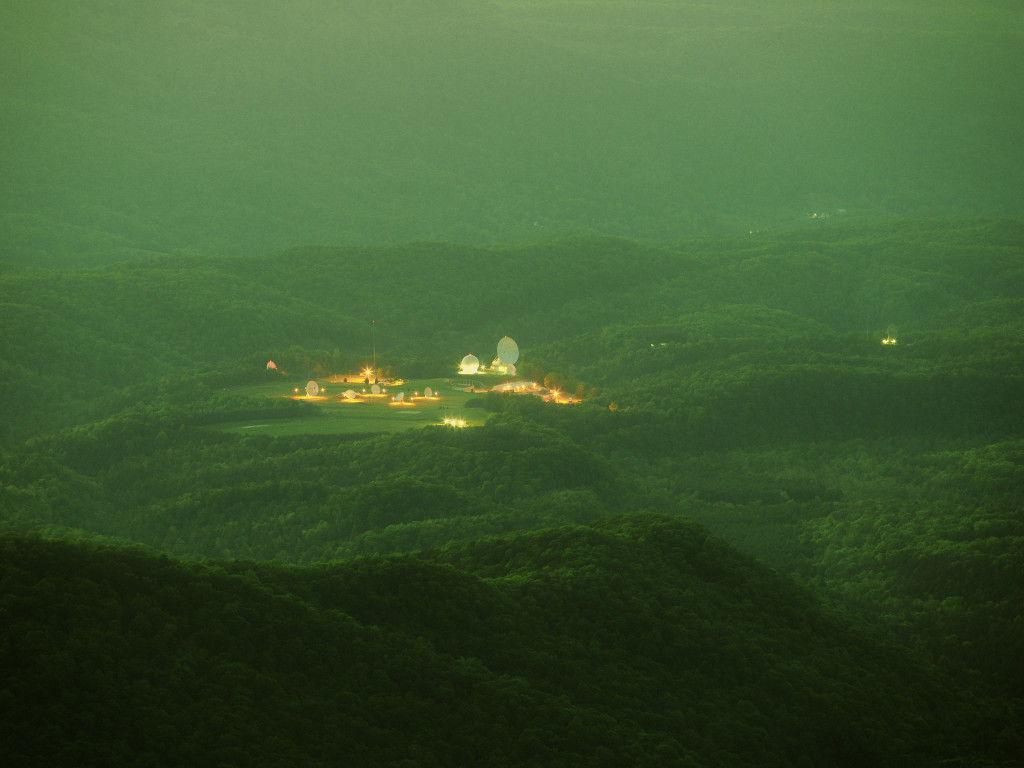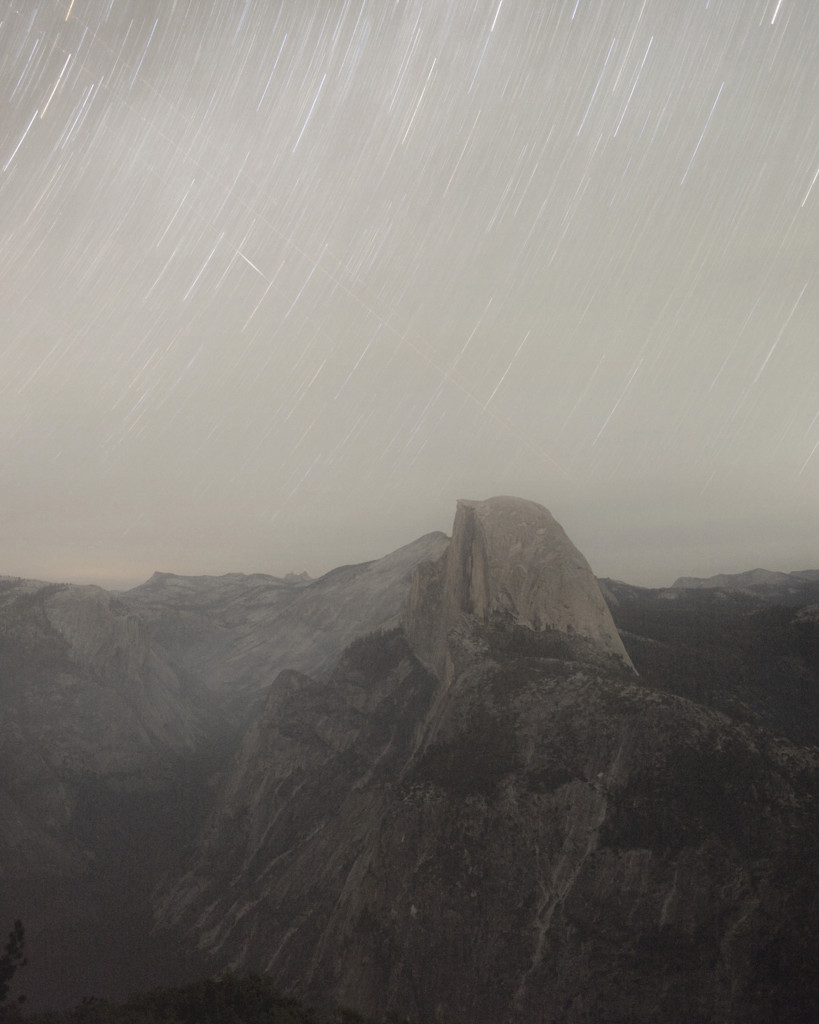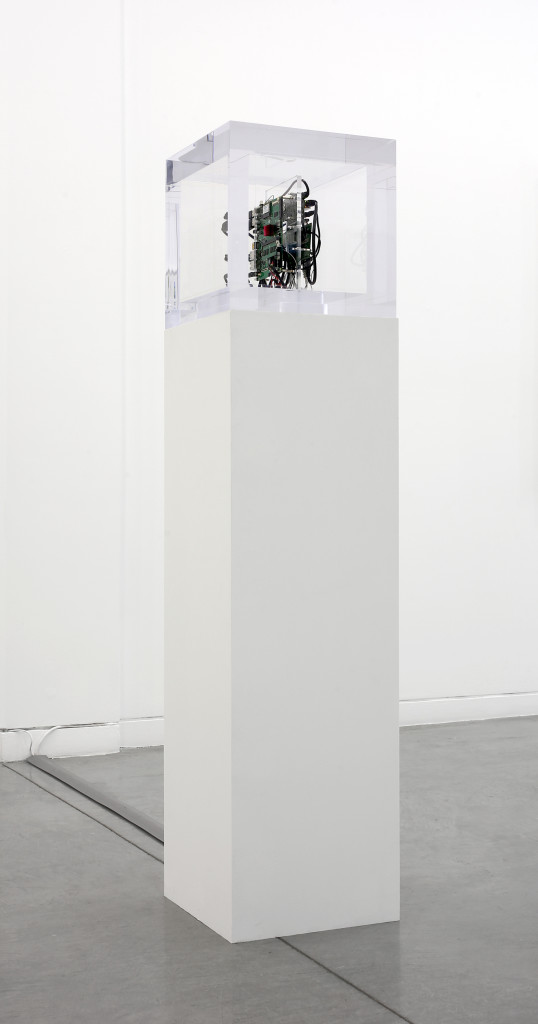(THIS ARTICLE IS MACHINE TRANSLATED by Google from Norwegian)
Paglen has exhibited the results in art galleries. He has mapped spy satellites, clandestine prisons in Afghanistan and the CIA's unregistered prisoner flights. His work can just as well be characterized as investigative journalism as art. This could perhaps be called a paradox, and object that these two areas are mutually exclusive. If aesthetic issues are not banned in investigative journalism – it also has a tradition with a distinctive design language – they should at least be subordinate to ethics. This is especially true when the subject is as urgent as the systematic surveillance by the authorities, as revealed by Edward Snowden's leaks.
Trevor Paglen is devoted to a larger retrospective presentation at the Frankfurter Kunstverein Art Museum in Frankfurt this summer. Here are several of the projects where he sheds light on what the military, with its usual sense of apt metaphors, even calls "the black world". Paglen first got on the trail of this shadow world when, as a geography student in the 1990 century, he discovered that there are still blank land areas on the maps – not because they are undetected as in classical cartography terra incognita, but because they are kept secret to the public. Paglen has published several books and written many articles on the geography of the black world (he was also one of the film photographers for Laura Poitra's Snowden documentary Citizenfour), but it is through art exhibitions and art books that his work has had the greatest impact.

Surveillance topography. The defense industry's collection of data has proven to be so incomprehensible, and for most, so intangible, that the general reaction is a sense of impotence. This powerlessness often turns into a cynical indifference. It may seem overly optimistic to think that a work of art can remedy this resignation. For what is a work of art capable of?
While journalism can convey facts, images such as Paglen's photographs can illustrate the technological apparatus that makes surveillance possible. Take, for example, one of the photographs shown in the Frankfurt exhibition: Here a hazy, magenta afternoon light rests over an extensive shoreline and the around 30 people enjoying the last hour of a hot summer day. The photograph itself does little to substantiate the claim of surveillance as its title NSA-Tapped Fiber Optic Cable Landing Site, Mastic Beach, New York, United States more than suggests. The photograph serves rather as a location and concretization of the Internet's infrastructural topography: Here, under the beach on the south coast of Long Island in New York, one of the transatlantic fiber-optic cables that stretch between the American and European continents calls, and it is by this point that the US National Security Agency has allegedly conducted massive data collection. When Edward Snowden's leaks were announced, it was especially the PRISM program's access to the servers of companies such as Facebook and Apple that received attention. But the Snowden files showed that the NSA also has another program, the so-called Upstream, which filters the communication that runs
through the submarine cables. Like the digital age of Ellis Island, the station where eighteenth-century immigrants were controlled, all data is tapped by the NSA at the gateway. The name Upstream is appropriate: the information trickles like a stream through the cables before spreading in wide streams across the continent. Here, Paglen is as much a geographer as an artist – the network is anchored in a specific place, the invisible is given an image, the abstract is made concrete.


The technologically sublime. The exhibition in Frankfurt shows several such examples of Paglen's work to visualize the invisible. Many of the blank fields on the maps he has examined are secret military training bases located in remote, cordoned-off desert areas. In the series Limit Telephotography Paglen photographed these bases with very powerful telescopic lenses from distances of up to XNUMX miles. The result is flattened, blurry images where one can barely decipher vaguely sketched aircraft hangars. Thus, the photographs function as indicators rather than as evidence. At the same time as they seek to reveal, the images seem to emphasize precisely the inaccessible, secret and diffuse of the geography of the black world.
Another striking photograph is The Fence (Lake Kickapoo, Texas), where Paglen has captured electromagnetic radiation using an amateur astronomer and a specially designed camera. Around the United States, there is an "electromagnetic boundary" that extends into space and captures vessels hovering over the continent. Describing this phenomenon is one thing – depicting it is something quite different.
His works can just as easily be characterized as investigative journalism as art.
As all Paglen's photographs are The Fence as beautiful as it is eerie. With the help of careful color adjustments and carefully planned compositions that often have art-historical precedents, the images maintain some of the veil of mystery in which the secret services are shrouded. the images to art. Paglen himself uses the term "the technologically sublime" about what he is trying to capture. The term the sublime is often used about magnificent landscapes and violent natural phenomena, but for 1700th century philosophers such as Immanuel Kant it was a subjective feeling of a pleasurable discomfort that arises when you are surprised by something so powerful that the mind runs wild. And it is precisely such an ambiguous inconvenience that characterizes the relationship with new technologies for most of us, whether it concerns the possibilities of artificial intelligence or the constant delivery of data.
Another night sky. Paglen's work works so well because it provokes these ambiguous feelings in the viewer, without it being at the expense of the treatment of facts. In the series The Other Night Sky, where Paglen has photographed the orbit of secret-stamped spy satellites across the night sky using a camera connected to a rotating telescope. This is an example of a project that is effective both by uncovering the satellites, but also because it provides a dizzying time perspective. Most communications satellites go in what is called a geostationary orbit, ie they follow the earth's rotation from a stable point 35 786 kilometers above the equator. The inconceivable thing is that this belt of satellites will stay in constant orbit for a billion years. In just a few years, we have become so familiar with the immediate exchange of information that satellites make possible, that we do not think that they constitute a form of archaeological artifact – timeless monuments – that carry two time forms, the instantaneous and the infinite. It is not the case that Paglen loses sight of the immediate political questions when he dwells on the sublime and timeless aspects of technology; rather, he insists that today's short-term technological solutions have unforeseeable consequences, and that there is thus an ethical demand to link the present to the future in these works.
Paglen's images are based on the fascination for the invisible, the boundless and the unrepresentable, and this is what makes the images art.
The images in The Other Night Sky are possible due to a network of amateur astronomers exchanging observations of satellites. By comparing the coordinates of known satellites with observations of unidentified objects, Paglen is able to predict where the suspicious, unregistered satellites will appear in the sky and image them as stripes of reflected light.
This amateur network is a kind of grassroots opposite to the authorities' data monitoring, but it is only in Paglen's photographs that their activities become activist.
A collective effort to observe the observer, to monitor the observer, crystallizes in Paglen's photographs, and this is what makes them some of the most important images of our time. Their greatest merit will be if they are also able to make us look at ourselves – to wake us from the dormant powerlessness.
Helsvig is a new permanent art writer in Ny Tid.


